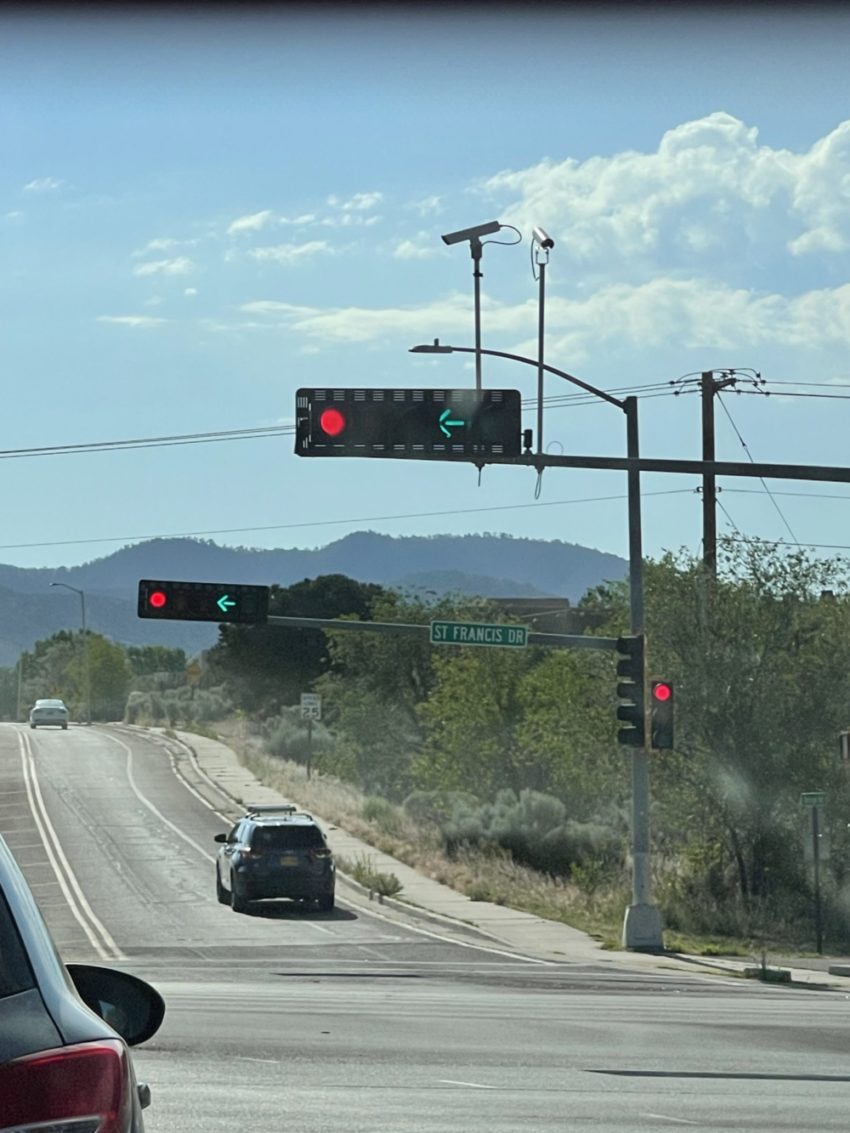What does this traffic light tell you? To me, it says
Left lane (red light)–STOP!
Middle lane (green arrow)–You can make a protected turn. Traffic coming toward you from the other direction is on pause. Go ahead, turn in front of it. You’re okay. No one will hit you. I’m serious.
Wait just a minute, here! The lanes are all mixed up! You can turn left from the middle lane but not from the left lane??? The lane that’s actually called the turning lane? My husband feels perfectly confident that he can turn safely from either lane. I’m not so sure.
This traffic light is literally a mixed signal.
We usually talk about mixed signals in relationships, romantic or otherwise. A mixed signal is a series of behaviors, gestures, or body language that contradict each other, so you’re not sure exactly how someone really thinks or feels. Someone is sending mixed signals when they tell you through clenched teeth
I’m NOT ANGRY.
Or someone says,
Let’s hang out
but then never actually calls or is always busy when you suggest meeting.
The most common way you’ll hear this is to say someone is
sending you mixed signals (romantically)
Are they interested in you, or not? You can’t tell because their actions, expressions, and body language seem to be saying opposite things. (Note: This is usually a diss, or a negative accusation, so I wouldn’t advise telling someone they’re sending mixed signals in a romantic situation. Just ask them how they feel.)
A close term is mixed messages. Mixed messages tend to be about spoken or written communication—an actual “message” that says two different things at once.
For example, a neighborhood cat shows up at our front door. We pet him, let him wander the house, give him treats, talk to him in that silly way cat lovers do. Our own cat is not amused. She growls, hisses, and lunges at him. The neighbor cat is definitely getting mixed messages. He’s totally confused. Is he welcome here or asking for a fight?
Or, a supervisor says,
Feel free to disagree with me. (This implies that there will be no negative consequences.)
—and then gets offended when you question his thinking.
Or a professor says,
There are no wrong answers here! (This implies you are in a safe space to create and imagine and test your ideas, even though you’re just learning.)
and then says,
I don’t think you understand the question–read your homework again.
Note: Being too direct is actually considered rude in some cultures. And in some cases, promising what you don’t intend to deliver is a way of letting someone down gently (as my father-in-law used to do). In the US, sending mixed signals/messages tends to be looked on as not being honest.
And so, after years driving on southern California freeways, bumper to bumper, at 70 mph*, I am terrified of driving here, in this laid back, slow-paced, high desert town with strangely mixed signals. My husband has promised to take me driving in the desert to help me remind myself I really can drive. So far, I’ve found excuses not to go.
If I ever do venture out behind the wheel again, I have decided I will simply sit at traffic lights until the car behind me beeps loudly. That’s a signal I can trust.
You can always rely on the impatience of strangers.
*see my earlier blog post “A Scary Story”about driving in California traffic

